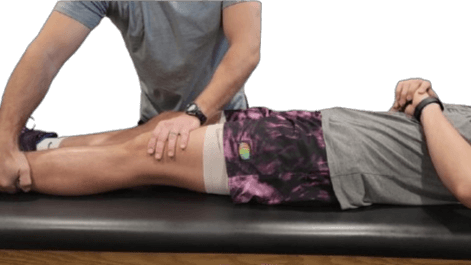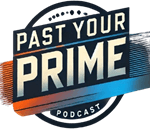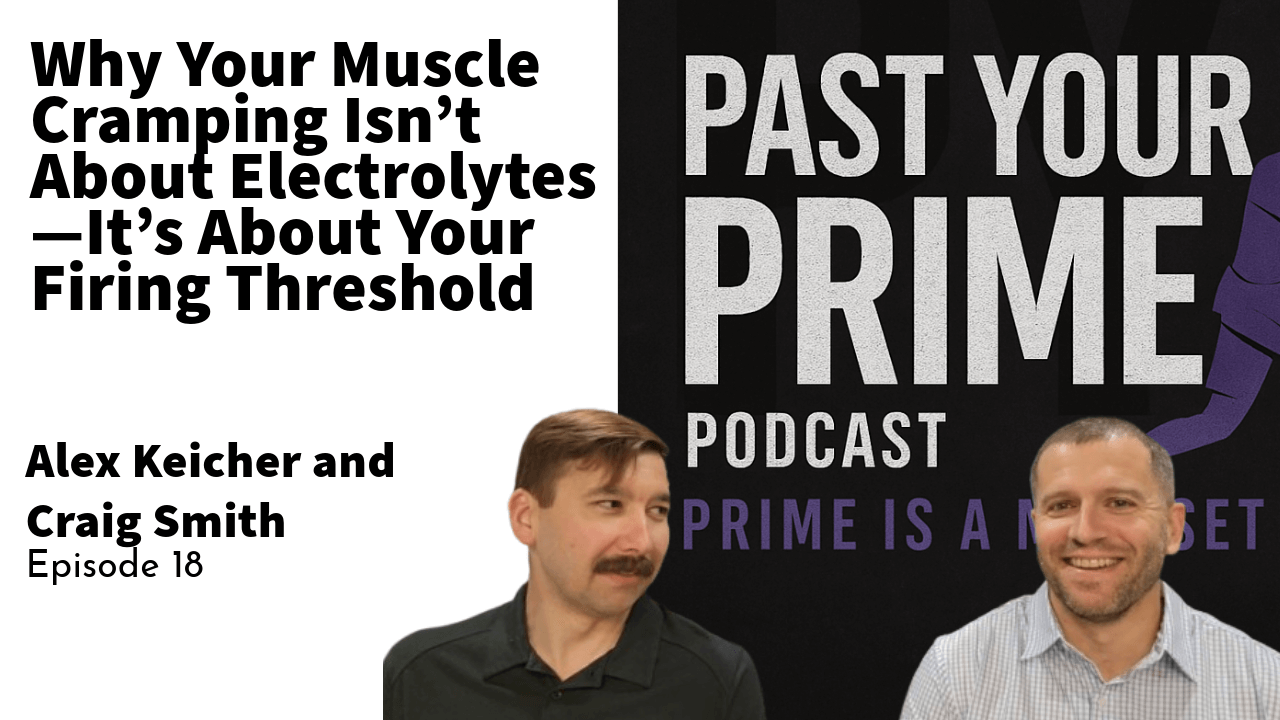How to start a workout routine can feel overwhelming—especially if you’re over 30, juggling work, family, and a body that doesn’t bounce back like it used to. Whether you’re returning after a long break or starting fresh, figuring out where to begin, what exercises to do, and how to stay consistent is tough. This guide lays out the exact steps to get started and build a routine that lasts.
I’ve worked with thousands of people over the years—at clinics, gyms, and through the system I developed at Smith Performance Center. That experience led to the foundation of Past Your Prime, a project I share with my friend and co-host Alex Keicher. Together, we’ve built a voice that speaks to people trying to stay strong and consistent as life gets more complicated.
It always comes back to the same foundation: consistency over intensity, structure over guesswork, and understanding your starting point.

How to Start a Workout Routine: 3 Foundations You Can’t Skip
Before worrying about sets, reps, or advanced programs, you need to address three core problems:
1. Overcoming Barriers to Showing Up
The biggest challenge? Just getting yourself to start. Most people rely on motivation—which fades. Our internal research at SPC shows you’re 33x more likely to quit if accountability is missing.
The solution: Put workouts on your calendar and treat them like non-negotiable appointments. This mental shift makes a massive difference. You’re not doing this for perfection. You’re doing it because you’re worth the effort.
2. Managing Pain and Injury
If you’re starting a workout routine with chronic pain or past injuries, your first goal isn’t intensity—it’s safety and sustainability. I use a phase-based system that we developed at SPC to guide this process:
Phase 1: Diagnosis — Understand the structural cause of pain
Phase 2: Symptom Stabilization — Learn how to control symptoms yourself
Phase 3: Activity Progression — Build tissue capacity with the right level of movement
Even when you’re hurt, there’s usually something you can do. The key is working within your limits without avoiding movement altogether.
3. Building a Strong Foundation
You need a base before you chase performance. That means focusing on six foundational movement patterns that show up in almost every real-life task:
Lower Body Push: Squats, sit-to-stands
Lower Body Pull: Hinge movements like banded pull-throughs
Upper Body Pull: Rows (horizontal pulling)
Upper Body Push: Push-ups, bench press
Split-Leg Movements: Lunges, half-kneeling to standing
Core Stability: Pallof press
I’ve included demonstration videos for each movement so you can learn them the right way. These movements are the building blocks for everything else. Master them first.
Craig Smith
Beginner Workout Routine: A Simple Plan to Get Started
Once you understand the foundations, it’s time to build a simple, realistic workout routine. This plan covers full-body strength, conditioning, and recovery.
Step 1: Warm-Up
Start every session with a short warm-up:
-
Muscle Activation: Light band work or controlled movements
-
Tissue Prep: Foam rolling or dynamic stretching as needed
-
Movement Practice: Rehearse the exercises in your workout at lower intensity
Step 2: Strength Training (2-3 Sets per Exercise)
| Movement Category | Beginner Exercise |
|---|---|
| Lower Body Push | Sit-to-stand |
| Lower Body Pull | Banded pull-through |
| Upper Body Pull | Banded row |
| Upper Body Push | Incline push-up or DB bench press |
| Split-Leg | Hand-supported split squat |
| Core Stability | Pallof press |
Step 3: Conditioning
Choose one:
-
Option 1: 10-15 min steady-state cardio (walking, cycling, rowing)
-
Option 2: Short intervals (30 sec work / 30 sec rest for 5-10 rounds)
Step 4: Cool Down & Recovery
-
Light movement and breathing drills
-
Static stretching only if needed
Frequency:
-
3 strength workouts per week (full-body)
-
Cardio on alternate days
-
1-2 recovery days
How to Progress a Beginner Workout Routine Safely
Progress isn’t about exhaustion—it’s about gradual, smart improvements. I break progress into three stages:
1. Rehab Standard
Goal: Recovery and control of pain
Workouts should leave you feeling better, not worse
If soreness makes you skip workouts, scale it down

2. Exercise Standard (Maintenance)
Goal: Consistency
Benefits: Fat loss, strength, cardiovascular health
This is the sweet spot for lifelong fitness
3. Performance Standard
Goal: Max output (strength, speed, endurance)
Use short 8-12 week cycles, followed by recovery
Avoid skipping to this phase too early
Many people starting a workout routine jump straight to performance and burn out. Start slow. Build consistency.
Craig Smith
If you want to hear how Alex manages the daily struggle of juggling exercise, work, and family, watch episode 15, How to Stay Consistent with Exercise When Life Is Busy.

Managing Recovery & Fatigue
Your progress happens during recovery—not the workout itself. If you’re constantly sore or tired, you’re not recovering well.
Key signs you need more recovery:
Fatigue or brain fog
Decreased performance
Elevated resting heart rate
DOMS (Delayed Onset Muscle Soreness) is normal, but it shouldn’t shut you down. Learn to tell the difference between challenge and overtraining.
Final Thoughts: Just Start and Keep Showing Up
The most important part of learning how to start a workout routine is showing up. Don’t worry about the perfect plan. Just keep moving, keep learning, and keep adapting.
-
Put workouts on your calendar
-
Start with movements you can do well
-
Don’t skip the basics (warm-up, cooldown, recovery)
-
Know your goal: rehab, maintenance, or performance
-
Prioritize consistency over intensity


